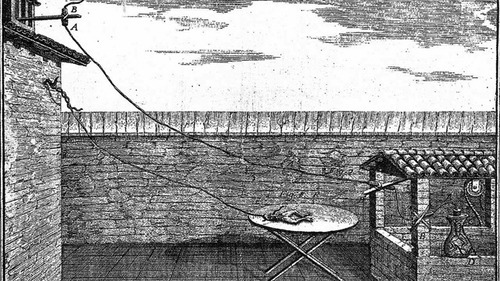
What Size Central Air Conditioner Do I Need?
When the heat of summer sets in, a central air conditioner becomes more than a luxury — it’s a necessity that stands between comfort and
Born on this day, February 18th, 1745 in Como, Italy, Volta was brought into a world without batteries, electric lighting, or any clear distinction between pseudoscience, magic, and science.
This mysterious and magical world was the beginning of our modern conceptions of science. As John Maynard Keynes put it, “Newton was not the first of the age of reason. He was the last of the magicians” (Newton, the Man).
The effects of static electricity were evident to people for a long time, but no clear understanding of electricity and its effects were available until people began experimenting with heat, magnetism, gases, liquids, and electricity in the 17th century.
The ancient Greeks discovered that you can create an attractive force by rubbing fur against amber (hardened tree resin), but it wasn’t until 1745 that Pieter van Musschenbroek invented the Leyden Jar, making it possible to store and harness static electricity. It is worth mentioning, however, that many artifacts were found near Baghdad, Iraq that some claim are evidence of an ancient form of galvanic cells (aka batteries). These “Baghdad Batteries” date back to roughly 250 BC to AD 250, “but the consensus amongst scientists today is that it is not a battery.”
In 1752, Benjamin Franklin discovered that lightning was just a massive form of static electricity. He was able to charge up a Leyden Jar by gathering the electrical charges created during a thunderstorm.
Volta’s discovery of the first modern battery that was able to create, and not just store, electricity came almost by accident. Fellow Italian, Luigi Galvani, whom we get the word “galvanization” from, was experimenting with electricity on recently dead frogs in the 1780s.

Source: The Scientist
The above picture demonstrates the setup for many of Galvani’s experiments. He found that when you attached two pieces of metal (iron and copper) to the nerves in a dead frog’s legs, they could be made to spasm or twitch. Galvani attributed this effect to an intrinsic electrical force in animals, including humans. The Leyden Jar, Franklin’s experiments with static electricity, and Galvani’s experiments with “animal electricity” laid the foundation for Volta’s experiments with the same mysterious phenomena.
These macabre electrical experiments with recently dead frogs also inspired writers and artists of the time. In 1818, Mary Shelley published her Gothic masterpiece, Frankenstein; or, The Modern
Prometheus.
Although Glavani concluded that animals possess an intrinsic electrical force (“animal electricity”), Volta expressed some skepticism. Through his own experiments with metals, Volta suspected that the frogs’ legs were simply conductors and that it was really the metals that were creating the electrical force.
“It is the difference in the metals that does it” – Alessandro Volta, 1792
Volta’s breakthrough came in 1799 when he discovered that a circuit of different metals, combined with brine (salt) soaked paper, would produce an electric current. By stacking together zinc, copper, and brine-soaked paper, Volta created the first modern battery (aka a “Voltaic pile”) able to produce a continual flow of electricity.
News of Volta’s discovery quickly spread, resulting in Napoleon offering him an invitation to address the Institute of France. Napoleon was so impressed with his invention that he made him a count and senator of Lombardy. Posthumously, Volta was recognized for his contributions to the field of electricity when the standard unit of electrical potential was named after him in 1881. Ever since, we call a unit of electrical potential, a “volt.”
Since a “Voltaic Pile” was easy to make from everyday materials, people around the world began experimenting with electro-chemistry. It is because of the Voltaic pile that discoveries in the field of electricity gained such quick momentum.
Many of Volta’s theories about electricity were discredited later, but his inventions and theories created the fuel for further discoveries. Battery-powered cars, cellphones, laptops, and everything else electrical and portable owe a lot of thanks to Alessandro Volta, inventor of the first modern battery.
So, bravo Volta, and bravo Google for giving him some much-needed recognition.
To conclude, here is a video showing you how to create your own Voltaic Pile:
Universal Home Experts cares about your safety & comfort.
Check out our Facebook, Twitter, and Google+ for other useful information and how-to’s.
Friendly Customer Care Representatives are available 24/7 at: (713) 364-0226
Call today to for Service That’s Out of This World!

When the heat of summer sets in, a central air conditioner becomes more than a luxury — it’s a necessity that stands between comfort and

Every homeowner has experienced it at one point or another: the water in the sink takes forever to drain, the shower floor is covered in

Lightning strikes can be a terrifying experience for any homeowner. The powerful boom and bright flash are unmistakable, leaving you to wonder about the safety